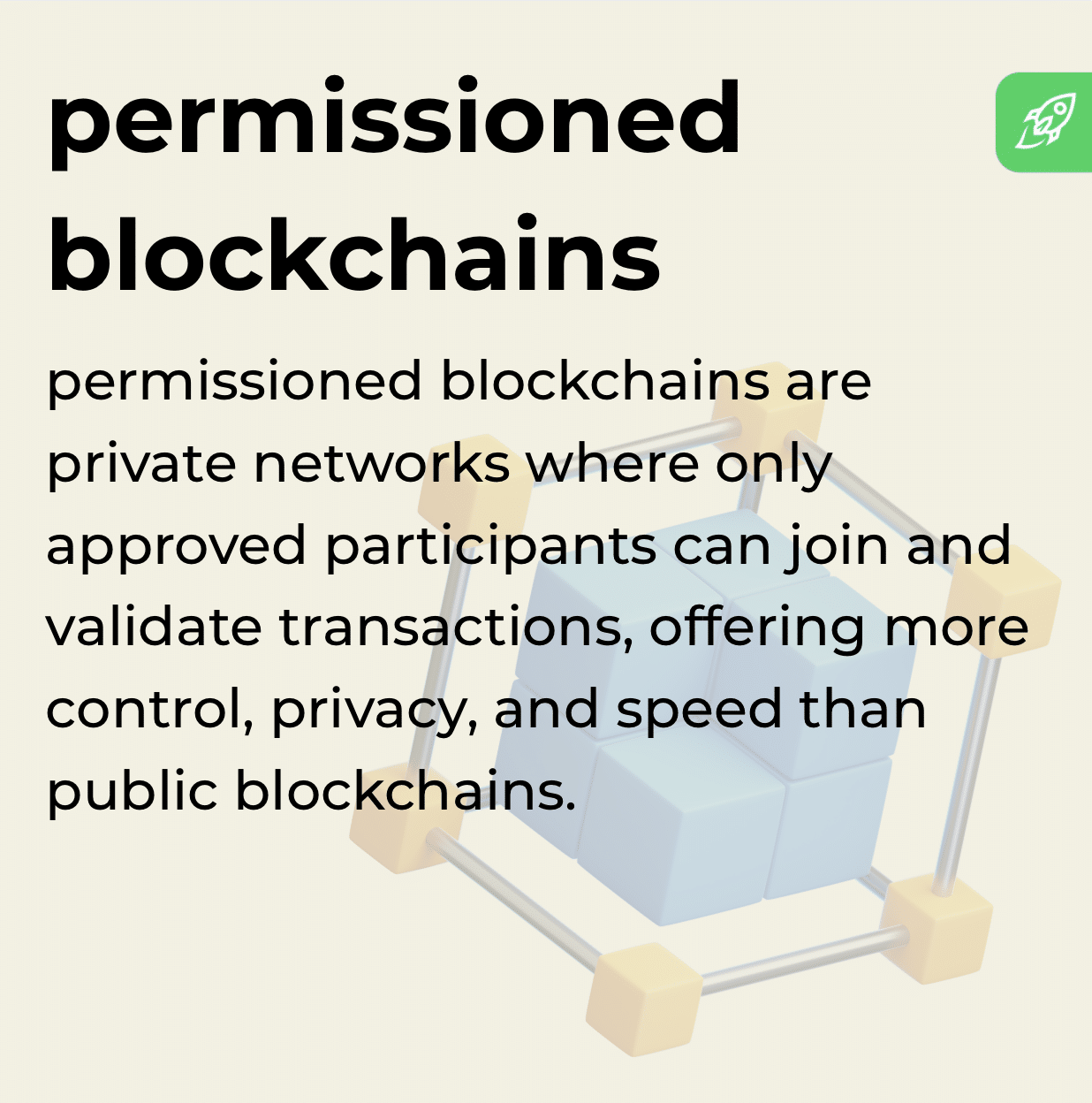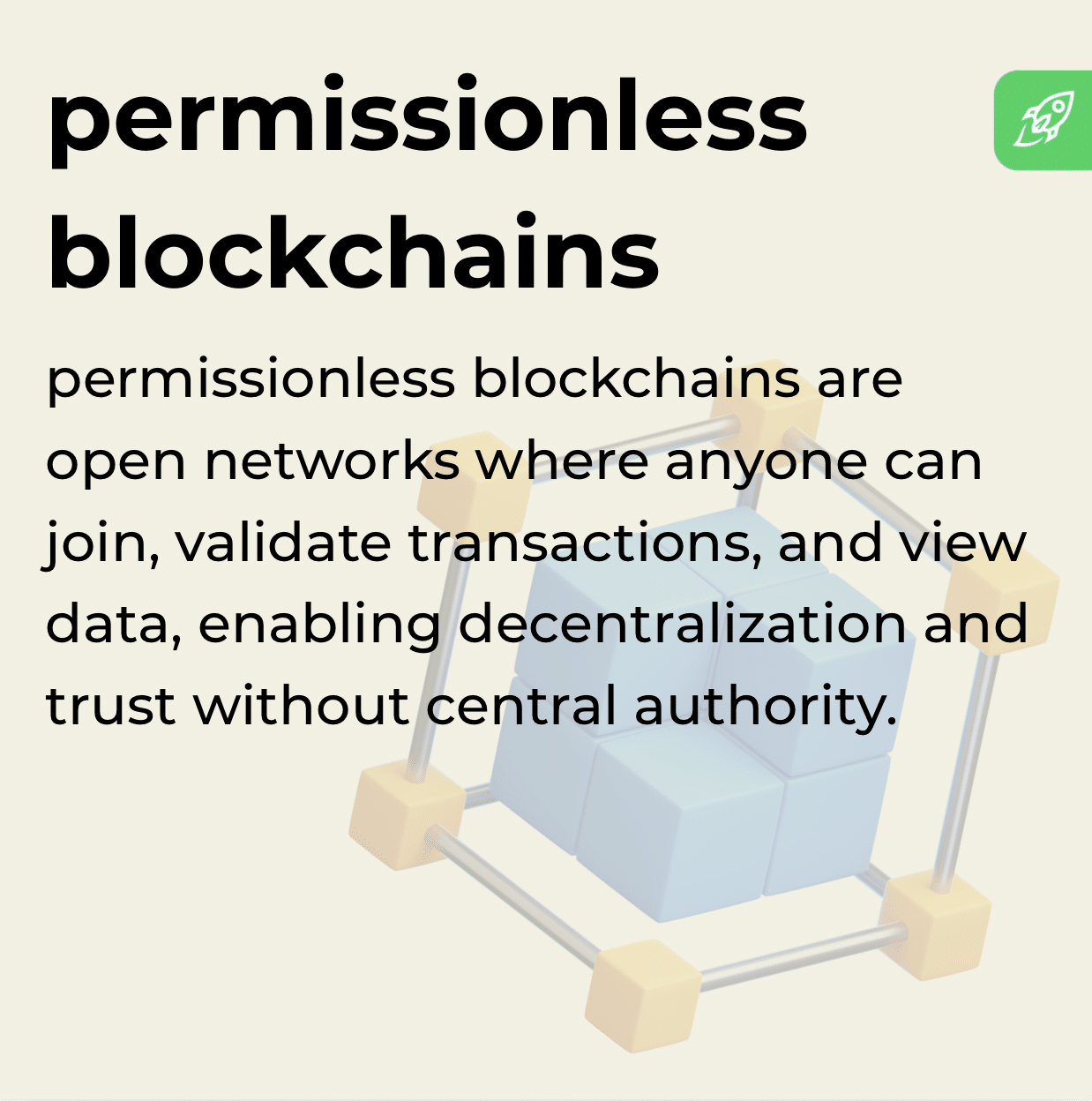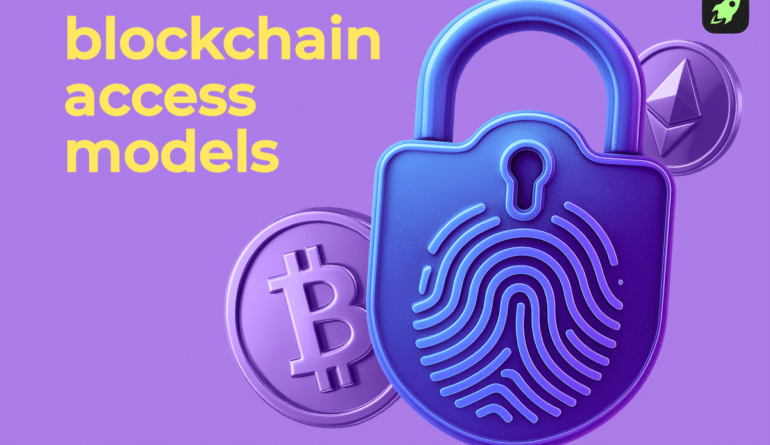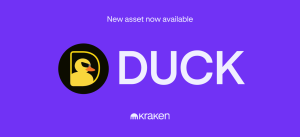Permissioned vs. Permissionless Blockchains
Most crypto investors have used permissionless blockchains like Bitcoin or Ethereum without realizing there’s another model entirely: permissioned blockchains. These private networks run very differently, controlling who can join, validate, or even see data. Knowing how both models work helps you judge a project’s openness, security, and growth potential—a key skill for spotting red flags and making smarter investment choices.
The Importance of Understanding Blockchain Permission Models
Knowing the difference between permissioned and permissionless blockchains can help you judge a project’s credibility, transparency, and growth potential. A network’s permission model influences how open it is to new participants, how decisions are made, and how easily you can access or verify information. Understanding these basics lets you spot risks like centralization or low liquidity and decide whether a token or platform fits your investment strategy. In short, it’s a key part of doing real due diligence.
Read more: What Is Blockchain Technology?
What Is a Permissioned Blockchain?
A permissioned blockchain is a private or semi-private network where only approved participants can join, validate transactions, or view certain data. Access is controlled by an organization or consortium, which sets the rules for membership and governance. This setup is common in industries where privacy, regulatory compliance, and control over data are essential. For an investor, these blockchains often power enterprise solutions or tokenized assets rather than open, public cryptocurrencies.

Examples
- Hyperledger Fabric: Used by companies like IBM and Walmart for supply-chain tracking.
- R3 Corda: Designed for banks and financial institutions to settle trades privately.
- Quorum: A permissioned version of Ethereum originally developed by JPMorgan for enterprise use.
Advantages & Disadvantages
Permissioned blockchains offer several strengths. They can process transactions faster and at higher throughput because they operate with fewer nodes and lighter consensus mechanisms. They also provide stronger privacy controls, allowing only approved participants to view or share sensitive data. Verified identities make it easier to comply with regulations, which is why these networks appeal to banks and large corporations.
At the same time, permissioned blockchains have clear trade-offs. Because a single organization or consortium sets the rules, decentralization is reduced and governance can be less transparent. Outside participants have limited visibility into activity on the network, and the closed nature of these systems often means lower liquidity or restricted access to tokens for retail investors.
What Is a Permissionless Blockchain?
A permissionless blockchain is an open network where anyone can join, validate transactions, deploy smart contracts, or simply use the system without prior approval. Basically, these are the blockchain networks we all know and love. These blockchains are decentralized by design and secured through economic incentives and cryptographic proofs rather than trust in a central authority. For investors, they’re the backbone of public cryptocurrencies, DeFi protocols, and Web3 apps.

Examples
- Bitcoin: The original public blockchain, used as a peer-to-peer digital currency.
- Ethereum: The leading smart contract platform powering DeFi and NFTs.
- Solana: A high-speed, low-fee blockchain for decentralized apps.
- Avalanche: A network focused on scalable, interoperable decentralized finance.
Advantages & Disadvantages
Permissionless blockchain networks give everyone equal access, which fosters innovation and large user communities. They’re typically more transparent because all transactions are public and verifiable. Decentralized governance also reduces reliance on a single authority, making networks harder to censor or shut down.
However, these strengths come with trade-offs. Global consensus mechanisms like proof-of-work or proof-of-stake can slow transaction speeds and limit scalability compared to private systems. Privacy is minimal by default, and regulatory compliance is harder to enforce because participants can remain pseudonymous.
Key Differences at a Glance
Access Control
Permissioned blockchains restrict who can join and validate transactions. Membership is granted only after approval by the organization or consortium running the network. This allows tight control over data and operations but limits participation and liquidity.
Permissionless blockchains are open to everyone. Anyone can download the software, run a node, or interact with smart contracts without asking for approval. This openness supports larger communities and more innovation but can also make networks harder to regulate.
Learn how to spot scams and protect your crypto with our free checklist.

Identity
On permissioned blockchains, participants are usually known and verified, often through KYC/AML checks. This creates a trusted environment where transactions are tied to real-world identities, which is important for banks and enterprises.
On permissionless blockchains, users are either anonymous or pseudonymous. Transactions are identified by cryptographic addresses, not names. This protects privacy but can increase risks such as fraud, scams, or regulatory uncertainty.
Governance
Permissioned blockchains use centralized or consortium-based governance. A small group of stakeholders sets the rules, upgrades the network, and resolves disputes. This can make decision-making faster but concentrates power.
Permissionless blockchains rely on decentralized governance. Changes are proposed and adopted through community consensus, token-holder voting, or open-source development. This model reduces single points of failure but can slow down upgrades and make coordination harder.
Consensus Mechanism
Permissioned blockchains restrict access to a small, approved set of validators, so they can use lighter consensus mechanisms such as Raft, PBFT, or IBFT. These are faster and more efficient because they don’t need to coordinate thousands of anonymous nodes.
Permissionless networks rely on open participation, which requires more robust, resource-intensive consensus methods like proof-of-work (PoW) or proof-of-stake (PoS). These mechanisms secure the network without needing trust in a central party but often slow down transaction finality.
Transparency
Private blockchains (permissioned) limit visibility. Only authorized participants can see transactions or sensitive data, which suits businesses that need confidentiality. Public audits are rare, and data sharing is selective.
In permissionless networks, everything is transparent by default. Transactions and smart contracts are visible on public explorers, making it easier for investors to verify activity and track funds. This openness builds trust but means there’s little privacy without extra layers.
Security Model
Permissioned blockchains rely on a trust-based security model. Because participants are vetted, the main risk is insider misbehavior rather than large-scale attacks. Security measures focus on access control and compliance.
Permissionless networks use a trustless model. Economic incentives and cryptographic proofs secure the system, making it resistant to censorship or manipulation even when participants don’t know each other. This approach is stronger against external attacks but can expose users to scams or phishing because identities are pseudonymous.
Scalability
In blockchain technology, permissioned blockchains can scale more easily because they operate with a limited, approved set of nodes. This smaller validator group lets the network handle more transactions per second and maintain predictable performance.
Permissionless systems have to coordinate thousands of nodes spread around the world. This decentralization strengthens security but typically lowers throughput and makes scaling harder without additional layers or rollups.
Read more: Rollups in Crypto
Transaction Speed
Because permissioned blockchains restrict access to trusted validators, they can confirm transactions quickly. Fewer nodes and lighter consensus means faster settlement times, which is useful for enterprise or supply-chain applications.
In permissionless blockchains, anyone can participate. While this openness is a key feature, it slows down transaction processing because global consensus takes longer to achieve. High traffic can also lead to congestion and higher fees.
Privacy
Private blockchains (permissioned) allow selective data sharing. Participants can keep sensitive information confidential while still benefiting from a shared ledger—an advantage for banks, healthcare, or regulated industries.
Permissionless blockchains are transparent by default. All transactions are public, which helps with trust and auditability but offers little built-in privacy. Users who need confidentiality must rely on privacy tools, mixers, or specialized chains.
Immutability
In permissioned blockchains, immutability is configurable. Because a central administrator or consortium controls the ledger, they may reverse or amend records under specific conditions (for example, regulatory demands or error correction). This flexibility benefits enterprises but reduces the “set in stone” quality investors expect from public chains.
Permissionless blockchains, by contrast, offer strong immutability. Once a transaction is confirmed, it’s practically impossible to alter without controlling most of the network. This permanence underpins trust in public cryptocurrencies.
Regulatory Compliance
Permissioned blockchains are easier to align with regulation. Known identities and restricted access allow KYC/AML procedures, auditing, and enforcement of data privacy laws. This makes them attractive for financial institutions and governments.
Permissionless blockchains are harder to regulate. Anonymous participation means compliance can’t be enforced directly, and regulators must focus on exchanges or service providers instead of the core network. This freedom can be appealing to users but also introduces legal uncertainty.
Smart Contract Control
In permissioned blockchains, smart contracts are usually deployed and governed by network administrators or the consortium. This ensures consistency and compliance but limits outside innovation.
In permissionless blockchains, anyone can deploy smart contracts without approval. This openness fuels rapid growth of DeFi and Web3 apps but also increases the risk of unvetted or malicious code.
Examples
Permissioned blockchains: Hyperledger Fabric (supply chains), R3 Corda (banking), Quorum (enterprise Ethereum).
Permissionless blockchains: Bitcoin (digital money), Ethereum (DeFi, NFTs), Solana (high-speed dApps), Avalanche (scalable DeFi).
Technical Architecture Comparison
Now, let’s get a little more technical. Don’t click off yet—understanding how permissioned and permissionless blockchains actually run under the hood can be quite important even to regular crypto investors, as it reveals the real limits, risks, and opportunities of a project. By looking at node setup, transaction validation, smart contract control, and interoperability, you’ll see how a network’s architecture can affect speed, security, decentralization, and ultimately the value of its tokens.
Node Operation and Onboarding
In a permissioned blockchain, node operators must be approved before joining the network. They complete identity checks and receive credentials or certificates that let them run validator or observer nodes. This process gives the network tight control over who maintains it, but limits openness and resilience.
In a permissionless blockchain, anyone can download the software, sync the ledger, and become a full node or validator (if they meet staking or hardware requirements). This open onboarding increases decentralization and redundancy but can make coordination and governance more complex.
Transaction Validation and Finality
Permissioned networks use lighter consensus protocols such as Raft, PBFT, or IBFT. With fewer trusted validators, transactions confirm quickly and reach deterministic finality in seconds.
Permissionless networks rely on resource-intensive consensus like proof-of-work or proof-of-stake. Global participation slows block times and confirmation, and finality is probabilistic or delayed until multiple blocks have passed. This design sacrifices speed for trustlessness and censorship resistance.
Smart Contract Deployment and Control
In permissioned systems, smart contracts are deployed and managed by network administrators or a governing consortium. Contracts may need pre-approval, code audits, or compliance checks before activation. This provides consistency and regulatory alignment but limits outside innovation.
On permissionless blockchains, any user can deploy a contract without prior approval. This fuels rapid growth of DeFi and Web3 apps but also allows unvetted or malicious code, placing more responsibility on users and auditors.
Interoperability Considerations
Permissioned blockchains often use private interfaces or custom standards. Connecting them to other networks or public chains typically requires dedicated gateways, APIs, or enterprise middleware. This can protect data but makes cross-chain communication slower and more complex.
Permissionless blockchains favor open standards, public APIs, and widely used token bridges. This openness eases interoperability with other public networks, but also introduces risks such as bridge hacks or inconsistent security across chains.
Use Cases
Here are some real-world examples of who’s building on each type of blockchain and what they’re doing with it.
Permissioned Blockchains: Enterprise & Regulated Industries
- IBM & Walmart (Hyperledger Fabric). Track food products across supply chains to improve recall speed and transparency.
- HSBC, ING, and other banks (R3 Corda). Settle interbank trades and manage syndicated loans privately.
- JPMorgan (Quorum). Builds internal payment networks and tokenized asset platforms with regulatory oversight.
- Healthcare consortia. Share patient data securely among authorized providers while following privacy laws.
Permissionless Blockchains: Public Networks & Open Innovation
- Bitcoin. Peer-to-peer digital currency with no central authority.
- Ethereum. Platform for DeFi, NFTs, and decentralized apps.
- Solana & Avalanche. High-speed, low-fee environments for gaming, DeFi, and other Web3 apps.
- Decentralized exchanges (Uniswap, SushiSwap). Run on permissionless chains to enable non-custodial trading.
Can Permissioned and Permissionless Blockchains Co-Exist?
They already do. Many networks and companies combine elements of both models to balance openness with control:
- IBM Food Trust. Built on Hyperledger Fabric (permissioned) but anchors hash proofs of supply-chain data to a public blockchain for independent verification.
- Energy Web Chain. Operates as a permissionless network for renewable-energy certificates but allows permissioned validator onboarding to meet regulatory standards.
- Central Bank Digital Currencies (CBDCs). Pilot projects such as the Bank of France’s digital euro or the People’s Bank of China’s e-CNY often run on permissioned infrastructures but use public or semi-public rails for interoperability with payment providers.
This hybrid approach lets organizations keep sensitive data private, comply with regulations, and still benefit from the security, liquidity, and transparency of public blockchains. It also shows that “permissioned” and “permissionless” aren’t mutually exclusive but rather points on a spectrum of design choices.
Permissioned vs. Permissionless Blockchains: Which One Is Better?
Just like with many other things in life, there’s no single “best” model. What works depends on what a project is trying to achieve. A network built for tightly controlled workflows or sensitive data will lean toward a permissioned design. That structure simplifies compliance, makes onboarding predictable, and lets administrators enforce privacy or regulatory rules from day one.
By contrast, a network that aims for open participation, broad token liquidity, or decentralized governance will benefit from a permissionless approach. This model sacrifices some speed and control but creates transparency, resilience, and community-driven growth.
Final Words
Both permissionless blockchains and permissioned ones use the same core technology, but their access, governance, and security models produce very different trade-offs. Neither is universally “better”. Learning more about these systems as well as their advantages and disadvantages can help you better understand the crypto market as a whole, as well as provide some insights into institutional adoption of different blockchain types.
FAQ
What are the similarities between permissioned and permissionless blockchains?
Both use distributed ledger technology to record transactions securely and rely on cryptography to maintain trust across a decentralized network of participants.
Can a blockchain network be both permissioned and permissionless?
Yes, hybrid designs allow some features to be open like a permissionless blockchain while others are restricted under centralized governance or access rules.
Which type of blockchain is better for enterprise use?
Enterprises often prefer permissioned blockchains because they offer controlled participation, privacy, and compliance while still leveraging digital assets and distributed ledgers.
Are permissionless blockchains less secure than permissioned ones?
Not necessarily. Permissionless blockchains gain security from broad decentralization, while permissioned networks rely on trusted validators and centralized governance for protection.
Is it possible to migrate from a permissioned blockchain to a permissionless one later?
Yes, but it’s complex. Moving to a permissionless blockchain involves reconfiguring consensus, identity, and digital asset management rules.
Which coins are using permissioned/permissionless blockchains?
Most public digital assets like Bitcoin and Ethereum run on permissionless blockchains, while private tokens or consortium networks (e.g., Hyperledger-based projects) use permissioned blockchains.
How do I decide which blockchain model is right for my project?
Evaluate your goals, regulatory needs, and trust model—permissionless blockchains suit open, public systems, while permissioned blockchains fit controlled environments with stronger centralized governance.
Disclaimer: Please note that the contents of this article are not financial or investing advice. The information provided in this article is the author’s opinion only and should not be considered as offering trading or investing recommendations. We do not make any warranties about the completeness, reliability and accuracy of this information. The cryptocurrency market suffers from high volatility and occasional arbitrary movements. Any investor, trader, or regular crypto users should research multiple viewpoints and be familiar with all local regulations before committing to an investment.
The post Permissioned vs. Permissionless Blockchains appeared first on Cryptocurrency News & Trading Tips – Crypto Blog by Changelly.
Cryptocurrency News & Trading Tips – Crypto Blog by Changelly




















